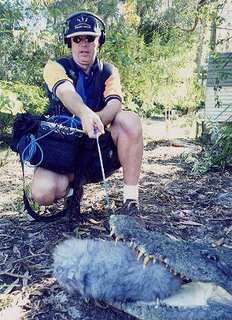THE BASIC RULES:
* Something is better than nothing. Even if it is not technically suitable for broadcast it can provide a valuable guide to the dubbing editor as to the sound that was there.
* Record: An ATMOSPHERE – background sound of a place. Record in Stereo for 2 mins if poss.
Recording individual SPECIES. record in Mono . Point mic directly at a person, animal etc.
* Can use a DAT, a DV recorder with mic extended away from camera or latest flash recorder.
* Label the recordings verbally before or after and on file or on tape box.
DONT GET TOO CLOSE! Always think about safety.

The essential constituent parts of a sound track are:
* Atmospheres
* Habitats
* Species-featured sound
If you can provide the post production team with these things them your film will sound superb!
ATMOSPHERES:
(a.k.a: “wild track” or “buzz track”)
Always try to record a good 2 min chunk - more if possible.
Record it in stereo (to give a sense of space)
The dawn chorus is a good example here (or a loud frog chorus)
Atmospheres usually have a small dynamic range (no loud noises jump out)
This is the invisible background that you don’t notice (unless it isn’t there!)
When you play an atmosphere back, it should be played at the level you would hear it in the wild. (But record it in the field as loudly as you can). Atmospheres are like a wall of sound that don’t get higher or lower (but can be loud).
To record an atmosphere: use a directional microphone and point it at the space in a room/location (not at a specific person/animal), to capture the acoustic (eg: echo-ey train station hall). Always listen with headphones to the sound that you are recording.
HABITATS:
These have wide dynamics, and are the sound, or ‘voice’ of a place. They provide ‘light & shade’, such as in the kittiwake colony (general cliff top atmosphere, interspersed with loud, dominating kittiwake calls).
The dynamic range describes the spectrum of noises you can record (a wide dynamic range will have some very loud, and some quiet calls in it). The dynamic range is measured in BITs. A CD has 16 BIT (equivalent to about 90dB), but technology is improving to 24 BIT, and some computers transfer sound at 32 BIT, which is similar to the dynamic range of our ears. The more BITs the better, as without changing any settings you can record someone talking quietly and an aeroplane taking off noisily. Eventually we’ll get rid of Gain and the need to adjust the recording level.
If you have a recording option, opt for the highest BIT rate (ie: 16 BIT not 8 BIT on the Z1 camera)
SPECIES-FEATURED SOUND:
Usually recorded in mono. This can be drama, dialogue, gunshots or even a piece of paper hitting the floor! Normally when put with the picture, you will have an atmosphere underneath, plus other elements like music.
When you play a mono voice back through stereo speakers, you get a ‘phantom’ image - and it appears that the person will be speaking from between the two speakers.
You can record this sound with split track (different sounds on different tracks). But don’t use two mics when just one will do!
No comments:
Post a Comment